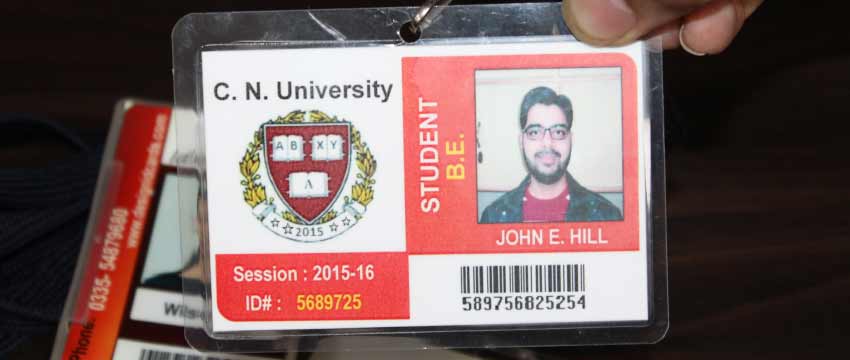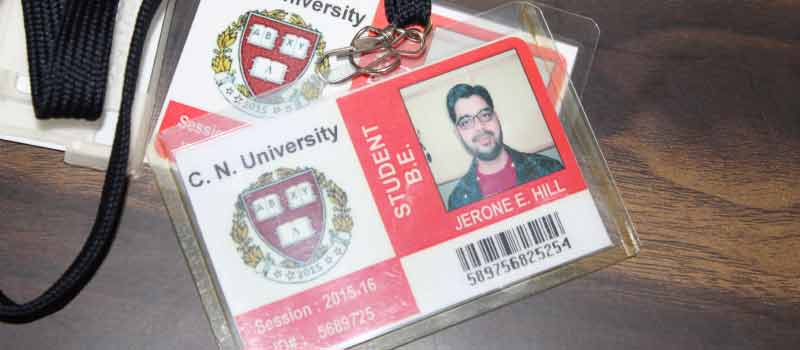Printing options Available in Student ID Badges Maker
The printing options available in a student ID badge maker can vary depending on the specific software or online platform being used. However, I can provide you with a general overview of some commonly available printing options:

- Single Badge Printing: This option allows you to print one ID badge at a time. It is useful when you need to print badges individually or in small quantities. You can typically select the specific badge you want to print from a list or preview, and then send it to the printer.
- Batch Printing: Batch printing enables you to print multiple ID badges simultaneously. This is particularly useful when you need to print a large number of badges efficiently. You can usually select a group of badges, specify the desired number of copies for each badge, and initiate the printing process.
- Printing Templates: Many student ID badge makers offer pre-designed templates that you can use to create professional-looking badges. These templates often include predefined layouts and formatting options for various badge elements such as student photos, names, ID numbers, and school logos. You can select a template and customize it according to your needs, and then print the badges based on the chosen design.
- Print Preview: Before sending the badges to the printer, most ID badge makers offer a print preview feature. This allows you to review the appearance of the badges on the screen before committing to printing. It helps you ensure that the badges are correctly aligned, that the text and images are legible, and that the overall layout meets your expectations.
- Customizable Printing Settings: ID badge makers typically provide options to customize printing settings. These settings may include choosing the paper size (e.g., standard ID card size, A4, letter, etc.), orientation (portrait or landscape), print quality (e.g., standard, high, photo-quality), and color options (black and white or full-color printing). You can adjust these settings based on your printing requirements and the capabilities of your printer.
- Printer Compatibility: Student ID badge makers are typically designed to work with standard desktop printers. They support popular printer technologies, such as inkjet or laser printers, that can handle the paper size and thickness required for ID badges. The badge maker software should provide options for selecting the desired printer from your available printer list and configuring any specific printer settings required for optimal printing results.
It's important to note that the available printing options can vary depending on the specific ID badge maker software or online platform you are using. Some badge makers may offer additional features, such as support for specialized ID card printers, duplex printing (printing on both sides of the card), or the ability to generate print-ready files that can be sent to professional printing services.
Download and Install Student ID Badge Maker
Add Security Features to Student ID Badges Using a Student ID Badges Maker
Yes, you can add various security features to student ID badges using a student ID badge maker. These security features help enhance the authenticity and integrity of the badges, making them more secure and difficult to replicate or misuse.
Here are some commonly available security features in ID badge makers:-
01Barcodes and QR Codes:
You can generate and add barcodes or QR codes to the student ID badges. These codes can contain unique identifiers, such as student ID numbers or encoded information. Scanning the codes with a barcode or QR code reader can quickly verify the authenticity of the badge and provide access to additional student information stored in a database or system.
-
02Holograms:
Some ID badge makers provide options to add holographic elements to the badges. Holograms are visually striking and difficult to reproduce accurately, making them effective anti-counterfeiting measures. They can be applied as holographic overlays or embedded within the badge design, providing a visible indication of authenticity.
-
03Security Printing:
Student ID badge makers often offer specialized printing options to enhance security. These include features like microprinting, which involves printing tiny, intricate text that is difficult to replicate. Other security printing techniques may include UV (ultraviolet) ink printing, which are complex, intricate designs that are challenging to duplicate accurately.
-
04Smart Chips and RFID Technology:
Some advanced ID badge makers support embedding smart chips or RFID (Radio Frequency Identification) technology into the badges. These chips can store encrypted information and communicate with card readers or scanners. They allow for secure access control, time tracking, or other features that rely on contactless authentication.
-
05Lamination and Security Films:
To protect the badges from tampering or alteration, some badge makers offer options for laminating the badges or applying security films. Lamination adds a protective layer over the badge, making it more durable and resistant to wear and tear. Security films may include holographic or tamper-evident elements, making any attempts to alter or remove the film noticeable.
-
06Customizable Security Elements:
Many ID badge makers allow you to customize security features according to your specific requirements. This might include incorporating school logos, seals, or watermarks that are unique to your institution. By including these customized elements, you add an additional layer of authenticity and make it more challenging for counterfeiters to replicate the badges.
It's important to note that the availability of security features may vary depending on the specific ID badge maker software or online platform you are using. Additionally, the effectiveness of these security features can vary, and it's essential to assess the specific security needs and risks of your institution to determine which features are most appropriate. Before using an ID badge maker, it's advisable to consult its documentation or reach out to the software's support resources to understand the specific security features available and how to best implement them for your student ID badges.
Ensure Student ID Badges are compliant with industry Standards Using Student ID Badges maker
By following these steps, you can ensure that your ID badges meet the necessary requirements:
